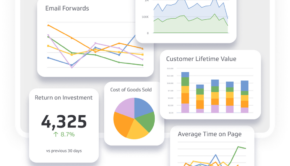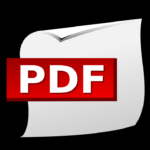5 Quick and Easy Tips to Boost Your Cash Flow
Understanding the difference between profit and cash flow is critical. Many business owners make the mistake of focusing almost exclusively on profit. While it’s certainly important for businesses to earn a profit over time, the timing of expenses, in relation to revenues, is the key to being able to continue operations.
Unless cash flows are adequate to cover the payment of operating expenses, the business will be in danger of immediate failure. The following tips can help you to maintain a positive cash flow.
Encourage Early Payment of Receivables
Accounts receivables are monies that are owed to you. You can temporarily increase your cash flow by encouraging your clients to pay you early.
Automatically send invoices to clients once work is completed or delivered. Offer a small discount, of 3 to 5% of the balance, to customers who pay early, usually within a few days of receiving the invoice.
For clients who have a past due balance, consider sending a polite reminder of the bill that is due, and advise if they will pay within the next week, any late fee or interest charges will be waived. This will encourage your late paying clients to go ahead and pay what is owed.
If you are experiencing a timing issue with your cash flow, and need to receive more revenue quickly, you may want to consider assigning your right to payment for your accounts receivables to a third party. Often you can receive payment for current or past due receivables upfront and directly from a third party. Be prepared to waive 10 to 20% or more of the balance that is owed to you as part of their fee.
Know Your Expenses and Actual Costs
One reason that so many business owners have such difficulty maintaining a positive cash flow is that they don’t really understand their actual costs, and when payment for bills and other expenses are likely to come due. When you understand your actual costs, you are then able to calculate your breakeven point for the goods and services that you sell.
In this way, you can make certain that you are charging enough to generate an income stream that will exceed your costs. You should also aim to time your receipt of revenues and change requests to happen before payment for your expenses is due; so that you don’t end up short on the day your bills must be paid.
Just as you want to encourage your clients to pay you as quickly as possible, you should delay payments that you owe others as long as possible. Remember to pay before you are charged interest, late fees or damage to your credit standing with your vendors and suppliers occurs.
Creative Incentives vs Discount Sales
Many times businesses will offer special discounts off of their regular prices in a bid to stimulate sales. While this strategy may bring in some additional revenue in a short period, it tends to be counter-productive in the long run if the new, discounted price ends up being lower than your actual cost to produce the item. A much better strategy is to offer special incentives to your clients that generate additional revenue. Offer perks and reward to clients that refer new customers to you, and that return to you multiple times for repeat sales.
By creating and offering incentives that encourage loyalty and repeat business, small businesses can stimulate sales without running the risk of eroding the strength of their base prices and overall pricing strategy.
Offer Pre-sales
What’s better than getting paid when you deliver a product or service? Getting paid upfront before you deliver the item! Once you are certain of the date that you can deliver the item, offer pre-sales to stimulate revenue before you’ve produced the product or service. Just be certain that you will be able to deliver the item on time before you commit to a delivery date and offer the item for sale!
Build a Cushion
Don’t spend all of your sales. Maintain a cash reserve on hand of around 20% of revenues to insulate and protect your business so that you can continue to cover costs and expenses during seasonal, slower sales periods or in case you experience a sudden, unexpected downturn in revenues or other catastrophic event.
Being able to maintain a positive cash flow truly comes down to preparation and being able to keep up with the status of your accounts. Using an automated and fully integrated accounting software program, such as Xero, makes it easier to update your accounts, including your accounts receivables and accounts payable.
With Xero, you can quickly create reports that provide current information on inventory, and cost of goods sold. The software allows you to see your current financial performance, and forecast your cash flows, with just a couple of clicks. Determining your actual cost and breakeven points is effortless as well, which makes strategic planning and developing your marketing and pricing strategies fast and painless as well.
With easy to use software that securely stores your data in the cloud; you can access your financial information from anywhere, at home, in the office or on the go so that you can track changes in real time and know exactly where you and your business stand at any moment.
Instant, up-to-date tracking of all of your accounts allows you to take quick action to structure the flows of income that both enter and leave the business so that you can rest easy with the knowledge that you have enough cash flow and cash reserves on hand to support sustainable growth and continued operations!
















